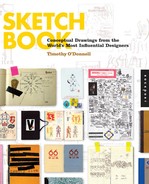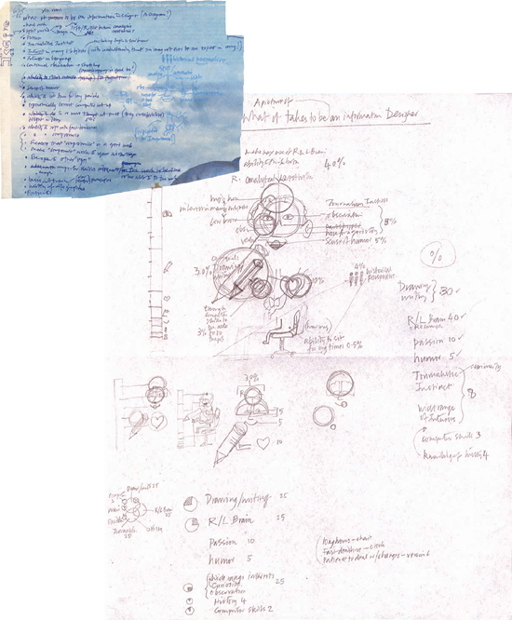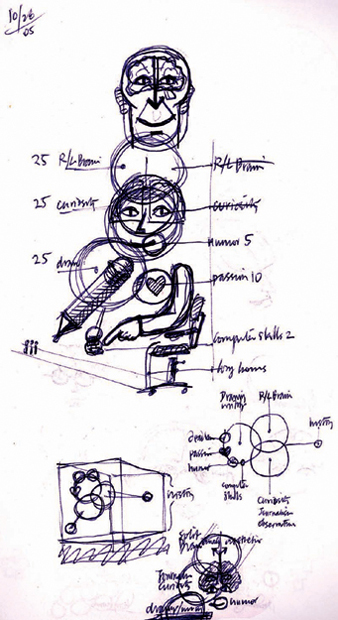Nigel Holmes
Westport, Connecticut
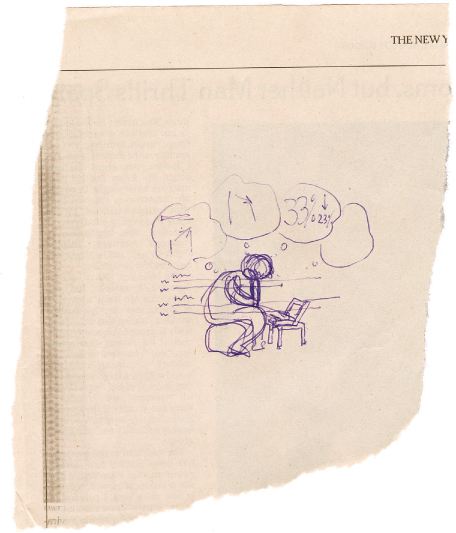

Nigel Holmes spent nearly two decades as graphics director for Time magazine, creating pictorial explanations of complex subjects, and was largely responsible for the explosion of interest in what he calls “explanation graphics.” Since beginning work on his own in 1994, Holmes has explained things to and for clients including Apple, Fortune, Nike, the Smithsonian Institution, and Sony. He has lectured widely and is the author of multiple books, his most recent being Nigel Holmes on Information Design, a book-length discussion with Steven Heller.
HOLMES’S HOMEMADE SKETCHBOOKS—made of whatever paper is handy inserted into a blue file folder cover—are densely packed and contain detailed schematics, caricatures on Post-Its, and notes for lectures and presentations. At the time of my visit, Holmes was busy working out how to make a three-dimensional bar graph out of a roll of toilet paper attached to helium balloons for an upcoming seminar. Here he speaks eloquently about the role drawing by hand has played in his long career.
“Something happens between the brain and the hand that I do not believe happens between the brain and the computer (with your hand and mouse in between). Of course, people tell me this is an old-fashioned notion: A whole generation is here that literally grew up using computers for everything. They may never experience what I’m talking about, but I’m still convinced that one can think more clearly without a digital intermediary: It’s pure thought to paper, without any suggestions from the endless file of templates or ways of constructing a drawing that are just sitting there in the computer waiting to tempt you to try them.
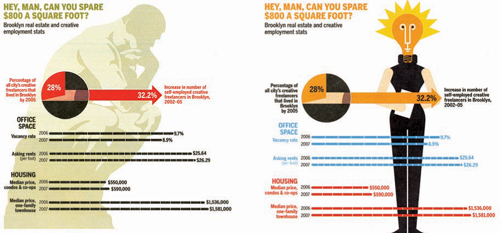
$800 / sq. ft.
£532/0.09m2
Information Graphic
New York Observer
“Every week I do a graphic for the real estate section of the New York Observer. Although the data is always some statistical aspect of the New York City real estate market, Nancy Butkus, the art director, wanted the pieces to be less chart-like and more illustrative. This would bring a bright graphic element to pages that were otherwise filled with pictures of buildings or developers. I get the statistics on Friday evening, and Nancy needs the final art some time on Monday.
This piece was about creative freelancers and the high and rising cost of housing and office space in Brooklyn. My first thought was to use Rodin’s ‘Thinker’ as a metaphor for creative people, but when I drew it, the shapes were too complicated for a background to the bar graphs (sometimes you need to carry a thing through to find out it doesn’t work). I went with something that was a mere scribble in my sketchbook—more of a note to myself rather than a sketch: It was the somewhat cliché light bulb to represent creative ideas. But it made a more arresting, simpler picture; it didn’t interfere with the chart material; and it allowed me to insert the image of a woman into the usually male-dominated section.
I usually put ideas into my sketchbooks quickly, however inconsequential they might be. In this case, the sketches helped me to get past one cliché to another!”
—Nigel Holmes
“I start everything on paper and only go to the machine when an idea is pretty well worked out. I do leave something to be discovered, just so I am not reduced to a machine myself, simply going through the motions of reproducing the idea in finished form. And I often fail in some respect to carry out the idea as well as I had thought I would be able to.
“Nowadays, I seldom show a hand-drawn sketch to a client. This is partly because my stuff usually has a text component that’s at least as important as the visual. I’ll set the words on the computer so a client can read the proposed text, even if it’s rough or will need editing later. Having done that, it makes sense that if the text looks real, the drawing should be in the same format.
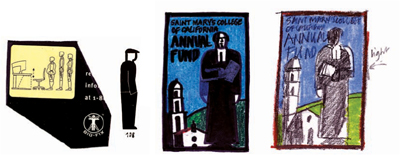
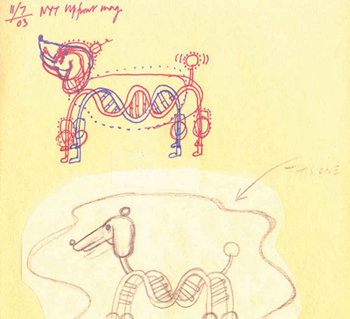

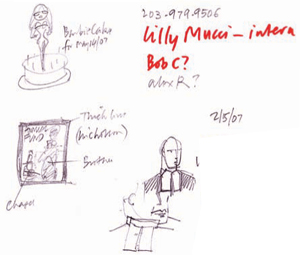
“I think the advent of the computer greatly damaged the art of illustration 20 years ago or so. Good illustrators were sucked into the new electronic fad. At the same time, magazines started to ask for everything in digital form. A lot of work started to look the same, but over the years, many illustrators have made elegant transitions to digital work. They have kept their own idiosyncratic styles, making the computer do their bidding rather than being led by it to a showcase of special effects previously impossible to achieve by hand. Affordable scanners have allowed other illustrators to paint and draw directly in whatever medium they want and still satisfy the commercial and technical wishes of their clients.
“For me, drawing on a computer is not that different from the way I drew before 1984. First I sketched; then I tightened up the sketch on tracing paper; then I put a piece of clear acetate over the tracing and drew the final with french curves and straight-edges—there were no freehand lines at all. I’m not against computers—I could not exist as a practicing information designer without one—but before I ever used one, and still, to this day, the sketch comes first.”

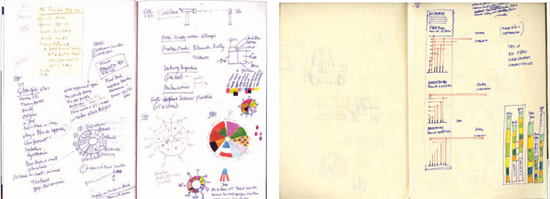
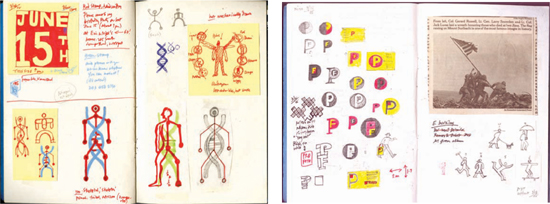
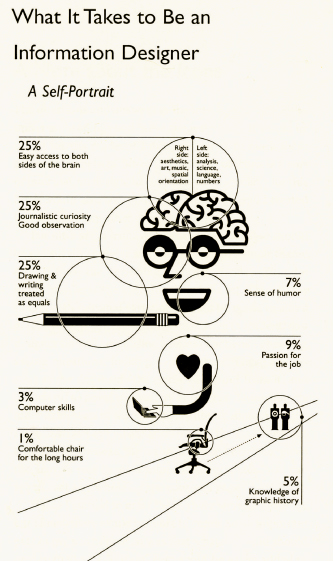
“Steve Heller interviewed me for a book about my career. It was one of a series of books intended for college-age readers. The format of the series was traditional and text-based, with no illustrations or color. But it seemed odd not to have any visuals in a book about design, so I created a couple of simple line diagrams in black and white that addressed my own working methods (and that would reproduce well enough on the paper used for the book.)
This one is a humorous attempt to quantify the attributes I think are important for an information designer. It takes a mild jab at what I consider the overrated expertise in computer skills that seems to dominate teaching of design (I give it 3 percent—very little importance). The diagram is a self-portrait of sorts, and it reflects much of the Q&A Steve Heller and I had in the book itself. It took a few tries to get the image right—all worked out on paper before touching the computer.”
—Nigel Holmes
